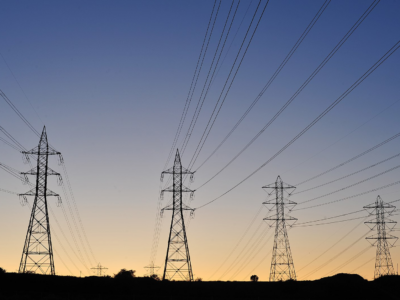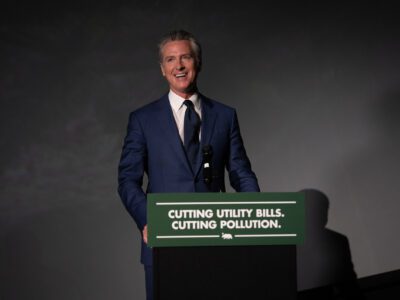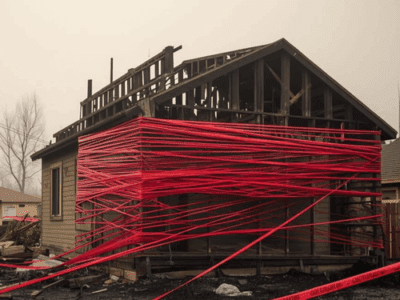Legislation
The CPUC Makes Good on Neighborhood Electrification
The state’s gas utilities tried to delay priority zones for decarbonization. The CPUC rejected that approach and has selected priority neighborhoods.
Here’s something to celebrate: the California Public Utilities Commission (CPUC) released its proposed decision designating initial priority neighborhood decarbonization zones. Loyal readers of Legal Planet will have followed our coverage on SB 1221, a law passed last fall that allows the CPUC to support “neighborhood decarbonization zones” to transition away from natural gas toward zero-emissions alternatives. Phasing out natural gas …
Continue reading “The CPUC Makes Good on Neighborhood Electrification”
CONTINUE READINGAnother Threat to Advocacy Groups
The new regulation on loan forgiveness bodes no one good.
A new Trump Administration rule restricts what organizations qualify as engaging in public service. Unless an employee qualifies, its employees won’t benefit from student loan forgiveness programs. That would cut into their workforce. On the face, the standard seems reasonable: organizations must “not engage in activities such that they have a substantial illegal purpose.” But when you dig beneath the surface, the whole rule turns out to be legally dubious and ideological to its core.
CONTINUE READINGA start on feasible permitting reform
A proposal from the National Governors’ Association is narrow and focused, and that’s good
I’ve written recently about the difficult politics of permitting reform at the federal level. But that doesn’t mean that there isn’t important work to be done. It does mean that successful proposals will have to be, as I wrote, low salience, thoughtful, and unlikely to provoke polarization. The National Governors’ Association has just come out …
Continue reading “A start on feasible permitting reform”
CONTINUE READING3 Lessons for a Regional Western Electricity Market
California is paving the way for the creation of an independent regional organization to oversee Western energy markets. It can learn from mistakes made in other regions.
In case you missed it among all the other news, the California legislature passed AB 825 in September (and Gov. Gavin Newsom signed it as part of the big energy package), paving the way for the creation of an independent regional organization to oversee Western energy markets. This presents a whole set of interesting challenges …
Continue reading “3 Lessons for a Regional Western Electricity Market”
CONTINUE READINGOur National Parks are Open — and Openly Threatened
The Drain is a weekly roundup of environmental and climate news from Legal Planet.
“I’m still here working.” That’s what a park ranger at Yosemite National Park told me last Friday, as he made his rounds. Anyone who thinks they can flagrantly break the park rules during the government shutdown is in for “a rude awakening,” he said. Literally. He and other rangers have been using noise to wake …
Continue reading “Our National Parks are Open — and Openly Threatened”
CONTINUE READINGArson Alone Does Not Explain the Palisades Fire
The Drain is a weekly roundup of environmental and climate news from Legal Planet.
When federal prosecutors charged a man last week with intentionally starting a brushfire that was suppressed but smoldered and ultimately became the Palisades fire, arson became the focus of attention all week. The city’s after-action report about the fire was totally overshadowed by questions around the suspect. What was his motive? Is there strong evidence? …
Continue reading “Arson Alone Does Not Explain the Palisades Fire”
CONTINUE READINGSigning AB 1167 Would be a Win for Energy Affordability
A bill that seeks to protect ratepayers from subsidizing utility lobbying still awaits Governor Newsom’s signature.
The 2025 legislative session has been a banner year for energy affordability legislation in California. The legislature passed—and the governor signed—a suite of six major bills that the governor and legislative leaders have championed in an effort to bring down energy costs for Californians. However, the job is not yet done. Governor Newsom has not …
Continue reading “Signing AB 1167 Would be a Win for Energy Affordability “
CONTINUE READINGFirst Monday? More Like ‘First Moanday.’
Since conservatives got a supermajority on the Supreme Court, it’s been on an anti-environmental tear.
Never say never. Maybe someday the Court will surprise us with a big win for the environment. But it would be foolish to count on that. We can also hope that the Court will do other good things, such as reining in Trump’s executive overreach. But it would be foolish to count on the Court to take a stand in favor of environmental protection.
CONTINUE READINGOne Easy Fix to Prepare for the Next Big Disaster
A little-known drafting wrinkle in current state law is impeding local governments from springing into action after disasters.
Along with my fellow Angelenos, this year I’ve had a front-row seat to the challenges of regional recovery from a major disaster event. The January 2025 Eaton and Palisades wildfires devastated LA-area communities, including two—the Palisades and Altadena—locally renowned for their distinctive neighborhood feel. In the aftermath, the response highlighted challenges at every level of …
Continue reading “One Easy Fix to Prepare for the Next Big Disaster”
CONTINUE READINGPermitting reform in the Trump Administration
It’s hard to do a deal when one side can’t be trusted to keep their side of the bargain
There’s more chatter about permitting reform again in Congress. I’m supportive of the concept, and thought the deal on the table at the end of the Biden Administration was probably worth doing. So there are now bipartisan efforts to amend NEPA, and also to do a broader permitting reform bill. I’ll leave specific analyses of …
Continue reading “Permitting reform in the Trump Administration”
CONTINUE READING











